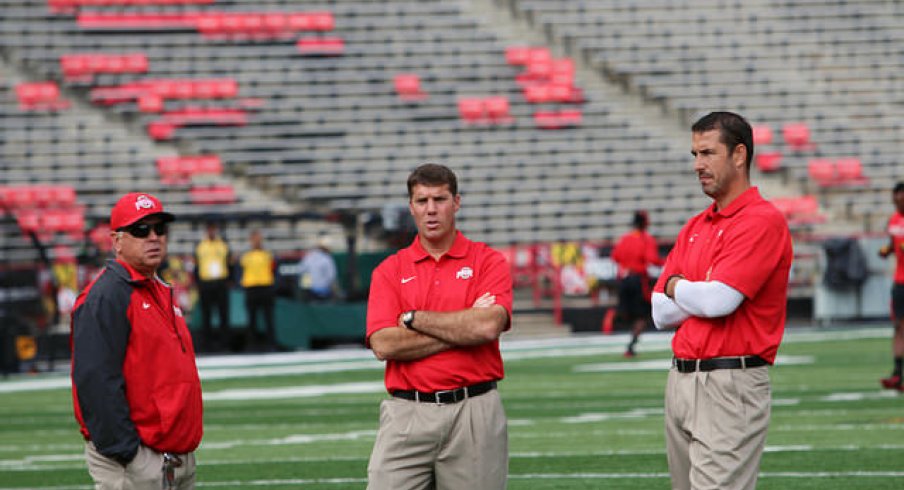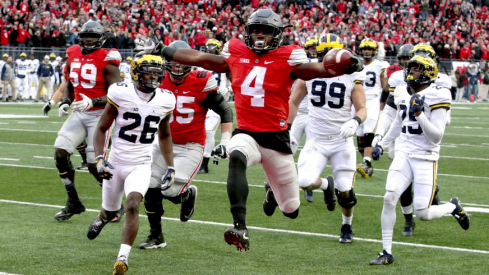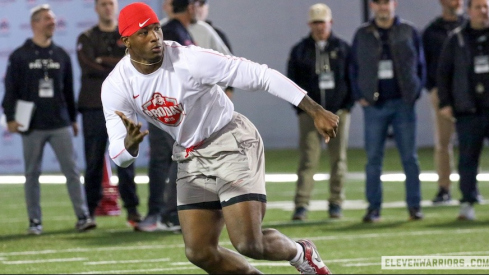Every spring Ohio State head coach Urban Meyer and his staff host a coaching clinic. This year, co-defensive coordinators Chris Ash and Luke Fickell detailed their 4-3 over, cover 4 defense.
Perhaps no factor was more important to the Buckeyes' national championship run than the Ohio State defensive improvement from 2013 to 2014. Ash accomplished the goal given to him by Meyer, which was to overhaul the Ohio State defensive scheme from back to front. The key to the Buckeyes' defensive improvement? According to Ash, it was keeping things simple.
Below I examine Ash and Fickell's foundational framework and how they align their defense. In my next column I will examine Ash's cover 4 rules.
K.I.S.S.
As noted, under Ash the Buckeyes' base defense is a 4-3 over front, with cover 4 coverage in the secondary. To the Buckeye coaching staff, less is more. According to Ash and Fickell, the Buckeye defense played this base defense over 65% of the snaps last season.
By having an identity, players can get countless reps, embrace their role and have a foundation to rely upon. More than any scheme changes, this was likely the most important alteration from 2013, when Ohio State seemingly altered schemes week-to-week.
And this simple approach permits Ohio State to focus upon critical aspects of team defense. To Ash and Fickell, signs of poor defense include mental errors, missed tackles, and loss of leverage on the ball carrier. By contrast, good defense is exhibited by a simple scheme, having a safe way to tackle, and maintaining leverage.
Setting the Over
Turning to defensive alignment, the Buckeyes set their defensive line separately from the back seven. Ash puts the coverage to the field. The back seven is split into two groups -- those that align to the field (the wider side when the ball is on the hashmarks) and those that align to the boundary.
To the field, the Buckeyes place their Sam outside linebacker (Darron Lee), their field corner (last year Eli Apple), and their free safety (Vonn Bell). Ash wants his free safety to have the skills of a third cornerback, able to cover the number two receiver in man coverage. The Will (Josh Perry), strong safety (Tyvis Powell), and boundary corner (last year Doran Grant) go to the boundary.
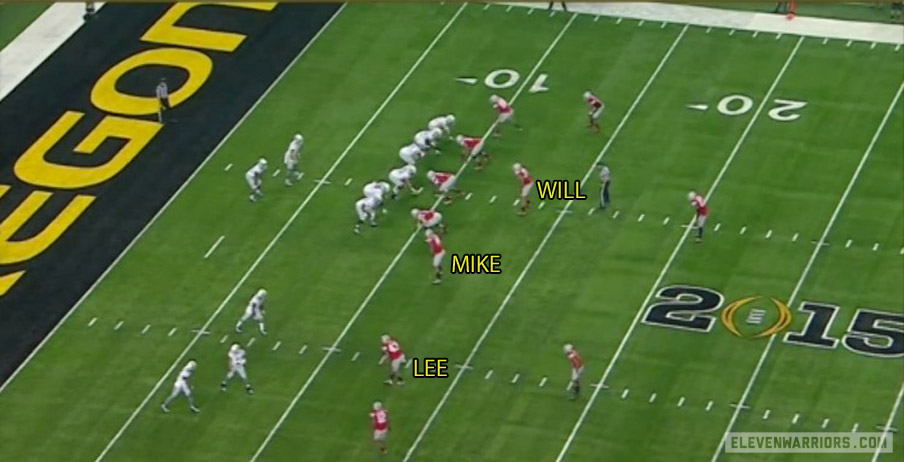
The base alignment for the linebackers is 40-10-40, meaning they initially align with the Mike in the frontside A gap (between the center and guard) and the Will and Sam over the C gaps (between the tackle and tight end).
But Ash's defense is designed to effectively respond to the spread offenses that pervade college football. So as shown above, the outside linebacker alignment quickly shifts horizontally based upon how the offense deploys its number two (second receiver) to the outside linebacker's side.
If the number two receiver is in the backfield to the side of the outside linebacker, that linebacker stays in his base position. But if the number two receiver is aligned in the slot to their side, the linebacker widens outside the tackle box. They set themselves at 2 x 5 inside that receiver.

And if the number two receiver aligns in the backfield away from the outside linebacker, the linebacker aligns itself in the near bubble area, meaning right outside the offensive tackle.
Leverage rules for linebackers also change depending on alignment. If they are inside the box they function as spill players, meaning they play the football inside-out, trying to force the ball-carrier to run laterally. But if they are outside the box, the linebacker functions as the critical force player. They are the one defender responsible for maintaining outside leverage and forcing the football back inside to their pursuing teammates.

Setting the Front
An over front means that the four man defensive line shifts one gap to the call side. So to the call, the defense will have a 3-technique (between the guard and tackle) and 7-technique (outside the tight end). Away from the call the defense will have a 1-technique nose guard (between the guard and center) and 5-technique (outside the tackle).
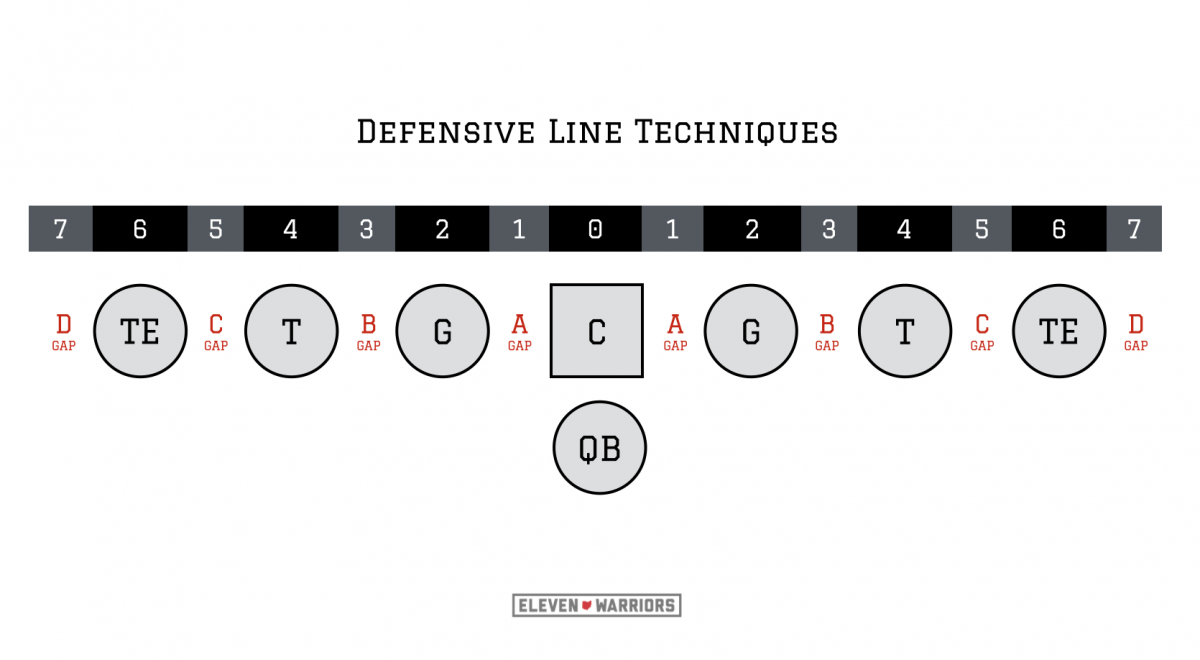
In contrast to the back seven, the over front is set based upon the offensive alignment -- specifically based upon the offense's use of tight ends. If the offense aligns without a tight end, the over front is set towards the running back. If the offense has one tight end, the defense sets the front towards the tight end.
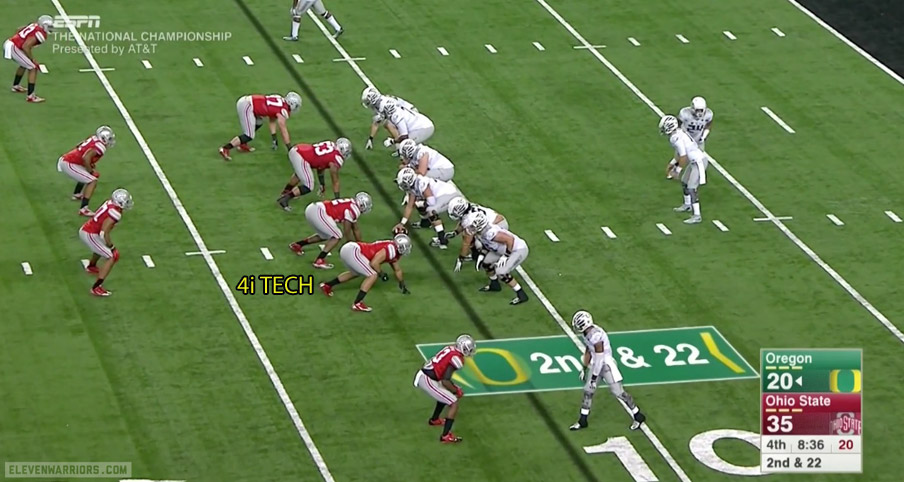
And if the offense has two tight ends, the front aligns either towards the boundary or to the defense's left. In using these basic rules, Ohio State can deploy its base defense and quickly adapt to different offensive fronts.
With the defense set, the Buckeyes can deploy their cover 4 defense upon the snap, which I will examine in my next column.
